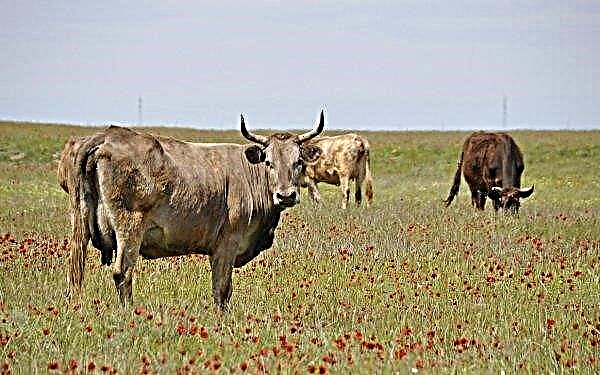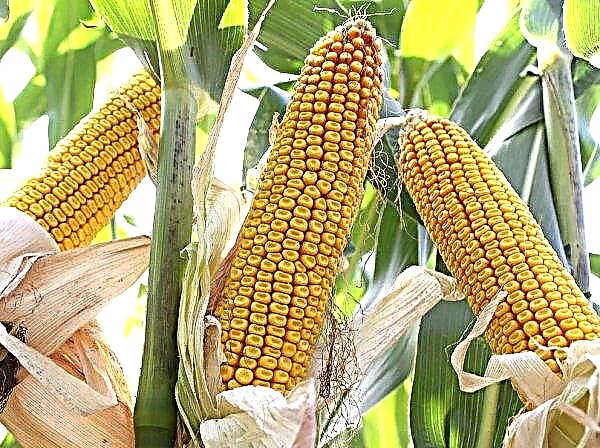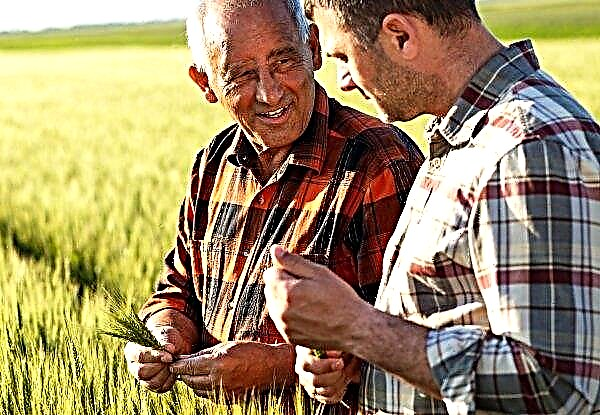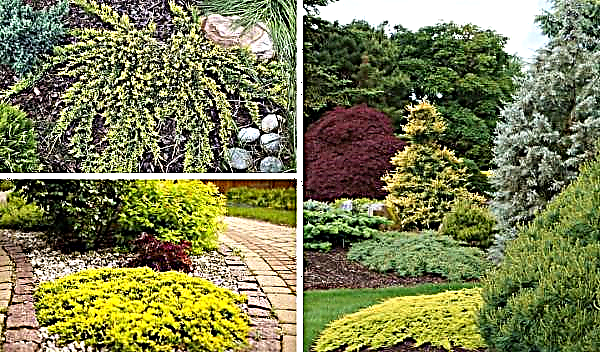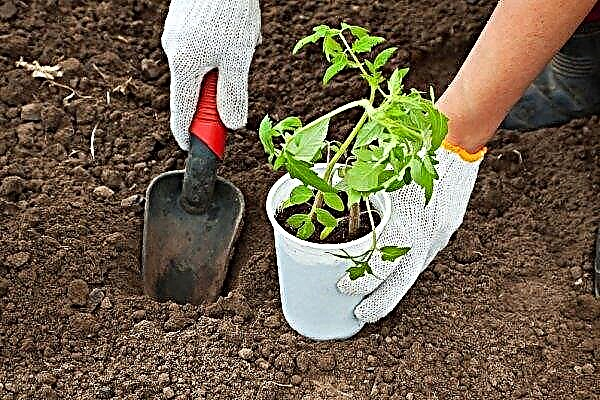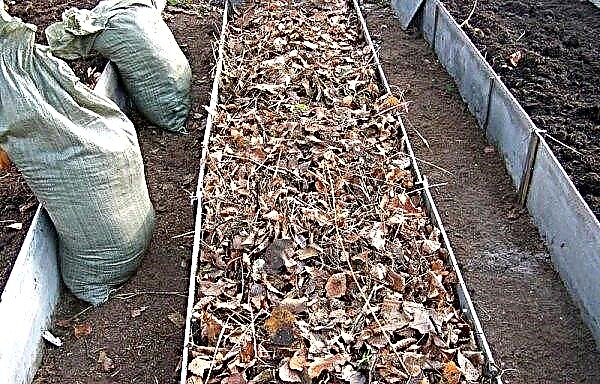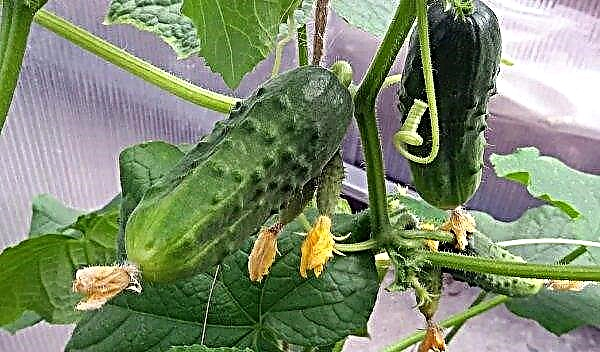Some gardeners, having determined their favorite variety of vegetables, grow it from year to year. Others are in constant creative search, following emerging novelties and conducting experiments with new varieties and hybrids. It is to such diversity lovers that we advise you to pay attention to the relatively new hybrid of tomatoes with the alluring name “Machitos”.
Grade description
Hybrid "Mahitos F1" is a product of the efforts of Dutch breeders. The tomato was bred by Rijk Zwaan Zaadteelt en Zaadhandel B.V., located in the village of De Lier in the south of the Netherlands. For a quarter of a century of its existence, the company has not only conquered the local market, but is also actively promoting its products in other countries, including Russia, Ukraine, Belarus.
Among the main characteristics of the hybrid, the following should be noted:
| Type of bush | Indeterminate, tall, can reach 200 cm. |
| Bush description | A powerful, symmetrically formed open-type plant with good foliage. The stem and root system are well developed. The leaves are large, dark green, the distance between two adjacent nodes (branches) is small. |
| Ripening time | Early ripening (from 90 to 100 days after emergence). |
| Fruit | Quite large, on average from 220 to 260 g, roundish, slightly flattened at the stalk, glossy. The pulp and peel have an equally saturated bright red color, without a green area on the peduncle. Dense, fleshy, very tasty (with thin sweet notes). |
| Variety Productivity | High: more than 3 kg from the bush, subject to cultivation under the film. |
Photo gallery
Advantages and disadvantages
- The indisputable advantages of the Dutch hybrid include the fact that this tomato:
- characterized by excellent germination (up to 100% of seeds);
- unpretentious, takes root very well, adapts to the proposed conditions and recovers after a transplant or other stress;
- forms a powerful root system that allows the plant to endure adverse conditions;
- quickly grows to an impressive size;
- it is well tied up and bears fruit, the fruits ripen in harmony and are equally large throughout the brush;
- provides high and long yields, the rate of which is almost independent of weather conditions, in particular, does not decrease with decreasing temperature;
- drought-resistant, not prone to burns;
- gives beautiful and evenly colored fruits with a very high taste due to the significant sugar content;
- It is characterized by a good keeping quality of the fruits, which provides the possibility of their relatively long storage and transportation
- universal: thanks to the dense skin, tomatoes do not crack during the heat treatment, therefore they are suitable for fresh consumption as well as for preservation or preparation of juices or ketchups;
- resistant to such common diseases as the tobacco mosaic virus, verticillosis, brown spotting, fusarium wilt;
- almost not affected by nematodes.
- Among the shortcomings of the hybrid are primarily noted:
- poor adaptability to outdoor cultivation;
- small-fruity and low productivity with waterlogging, dense planting and other disturbances in agricultural technology;
- unevenly colored pulp (usually this is due to a lack of magnesium and potassium);
- the impossibility of seed propagation from grown plants at a very high cost of seed material (the wholesale price for 100 seeds is about 9 euros).
Self-growing seedlings
Makhitos seedlings are best grown on their own. The fact is that even an experienced gardener will not be able to identify a tomato variety by the appearance of seedlings (in the best case, you can determine the type of future bush - determinant or indeterminate). Given the very high cost of the original seeds of the hybrid, when buying ready-made seedlings, there is a great risk instead of purchasing ordinary varietal tomatoes planted from seeds of our own assembly.
Sowing time
The timing of planting tomato seedlings must be determined independently, focusing on the climatic zone, weather forecasts and their own intuition.
Important! Overgrown seedlings take root very poorly, and if the bush begins to bloom, then the buds will have to be removed altogether, since a non-rooted plant will still not be able to form a good ovary.
Tomato seedlings grow and develop quickly enough, and in early and highly productive Dutch hybrids, these periods can be even more condensed. Therefore, it is necessary to calculate the sowing period so that the proposed landing in the open ground could take place after 55 days.
Soil mix
With the beginning of the "seedling" season, a large number of ready-made substrates for seedlings are on sale - balanced and decontaminated soil mixtures with which no preparatory manipulations are necessary. However, with all the convenience of working with such soil, experienced gardeners still advise preparing the soil for seedlings on their own, insisting that in this case, the plant, after subsequent transplantation into the open ground, will experience much less shock and take root in a new place faster. To ensure the appropriate composition of the soil mixture using:
To ensure the appropriate composition of the soil mixture using:
- garden soil taken in the place where the plant will be grown;
- peat;
- river sand;
- compost or other organic matter (fresh manure in the soil cannot be used for seedlings).
Important! Tomatoes prefer neutral soil (pH - within 6.5–7). If necessary, the substrate must be acidified or, conversely, reduced excessive acidity.
All ingredients are mixed in equal proportions, wood ash is added to them as a source of potassium, then the prepared soil is pickled (decontaminated) by abundant watering with potassium permanganate solution, kept in an oven, heated to 70–90 ° С, or, on the contrary, in frost when temperature below –15 ° С. In the latter case, it is recommended to carry out several successive removal of the soil in frost, between which the soil should be kept warm, allowing all microorganisms in it to wake up, in order to guarantee their destruction by the next freezing.
Capacity for growing
The easiest way to grow seedlings in special cassettes. For tomatoes, the Dutch or Polish standard is optimal. Since the seeds of “Mahitos” differ in almost 100% germination, they can immediately be planted one at a time in separate cartridges of sufficient volume (at least 300 cubic cm) and later not waste time picking - thinning with transplanting into larger containers. Conventional boxes or boxes are also suitable for seedlings, but in this case you need to stock up on additional containers in which grown bushes will be transferred. If there are no cassettes for this purpose, you can use disposable plastic cups or denser boxes of yogurt.
Conventional boxes or boxes are also suitable for seedlings, but in this case you need to stock up on additional containers in which grown bushes will be transferred. If there are no cassettes for this purpose, you can use disposable plastic cups or denser boxes of yogurt.
Of course, peat tablets are a very convenient option for growing tomatoes. They are planted whole in the ground, without extracting plants from them, but such a pleasure is quite expensive, given that you need to purchase them on each bush without the possibility of reuse.
Seed preparation
In some sources, you can find recommendations for pre-soaking the seeds of "Mahitos" in rooting solutions such as "Immunocytophyte", "Virtan-Micro", "Epina", "Kornevina", etc. However, in reality this does not need to be done.
Important! The expensive seeds of Dutch hybrids went through all the necessary pre-planting treatment, so they can and should be sown immediately, directly in the dry state.
Additional procedures for dressing, saturation with moisture and nutrients for Mahitos seeds are not only unnecessary, but also harmful, because in such a situation the plant may receive an additional burn or be oversaturated with fertilizers, which will further increase the growth rate of the bush and sharply reduce its yield.
There is also no need to pre-check the seeds for germination: at the declared price of goods, a European producer, who values his reputation, guarantees almost complete absence of defective packaging in the packaging.
Sowing seeds
Tomato seeds are usually planted to a depth of 10 mm. The easiest way is to pour into the prepared containers such an amount of earth that will allow you to lay the seeds directly on its surface, after which you will only have to sprinkle the seeds with a thin layer of substrate.  When using cassettes for seedlings, 1 seed is placed in each cell. If sowing is carried out in boxes, the seeds should be laid out no more often than at a distance of 3 cm from each other (this applies to the row width and the laying frequency in each row).
When using cassettes for seedlings, 1 seed is placed in each cell. If sowing is carried out in boxes, the seeds should be laid out no more often than at a distance of 3 cm from each other (this applies to the row width and the laying frequency in each row).
Important! Watering the earth should be very plentiful, but only before laying the seeds. After sprinkling the top layer, you can only sprinkle it slightly from the spray gun, otherwise the seeds may unevenly deepen with a stream of water, and this will significantly slow the emergence of seedlings.
Seedling Care
After planting the seeds, the containers are tightened with a film or covered with glass and placed in a warm place (the temperature should be at least 25 ° C, for this purpose, a window sill next to a battery or other heating device is ideal). In this state, the boxes with seedlings can withstand the first 5 days - this time is usually enough for Makhitos to give the first shoots. Periodically, the film from the soil should be removed for a short time and, if the earth has dried, carry out its moisturization using a spray gun.
When shoots appear, the greenhouse regime is gradually canceled (first remove the film for several hours, then increase this time, and finally remove it altogether so that it does not interfere with seedling growth). At the same time, it is necessary to reduce the external temperature to about 20 ° C - at this level, the main process of forming bushes takes place. Young seedlings need a lot of light. If the days are cloudy, it is worth installing special lamps that will provide tomatoes with at least a 12-hour light day, and the more intense the lighting, the better.
Young seedlings need a lot of light. If the days are cloudy, it is worth installing special lamps that will provide tomatoes with at least a 12-hour light day, and the more intense the lighting, the better.
Watering tomatoes in the first weeks of their growth should be plentiful, but not excessive. Both drying and waterlogging are equally detrimental to seedlings. But “Makhitos” does not need additional nutrition at the stage of growing seedlings.
After the formation of 2 real leaves, the seedlings dive, but this procedure is necessary only when tightly planted in common boxes or when using cassettes with a small cell. Machitos tolerates transplantation quite easily, but even for this stable hybrid this procedure is stressful.
Seedling hardening
Hardening of seedlings begins about 2 weeks before the expected date of planting of its seedlings in open ground. The meaning of the procedure is to prepare young plants for a future radical change in external conditions. It is necessary to begin hardening by taking seedlings out into the open air in the daytime and leaving it there for a short time, say, for 1 hour. Then the time spent by the bushes outside gradually increases and approaches from both sides to the dark time of the day (seedlings are taken out earlier and left longer). By the time of transplanting to a permanent place, the tomato bushes should already spend a full day and all night in the open air.
It is necessary to begin hardening by taking seedlings out into the open air in the daytime and leaving it there for a short time, say, for 1 hour. Then the time spent by the bushes outside gradually increases and approaches from both sides to the dark time of the day (seedlings are taken out earlier and left longer). By the time of transplanting to a permanent place, the tomato bushes should already spend a full day and all night in the open air.
Planting seedlings in a permanent place
Seedlings of the Dutch hybrid are considered ready for planting in open ground, when about 6 true leaves formed on the bush. If the conditions for growing seedlings were created correctly, then by this time the bushes should grow by 20–25 cm. The laying of the first fruit brush is welcome, but if flowers began to bloom on it, such a branch will have to be removed.
In order not to lose actively forming buds, “Makhitos” should not be planted in open ground before the soil has completely warmed up. The optimum temperature of the soil for the development of the hybrid is 18 ° C, so you should not hurry with a transplant, especially since unexpected frosts characteristic of April and even the beginning of May can completely destroy the first crop at the stage of laying it. The classic planting scheme used for the "Makhitos" involves the placement of bushes at a distance of 35 to 40 cm from each other. However, a space of at least 1 m wide should be left between the rows.
The classic planting scheme used for the "Makhitos" involves the placement of bushes at a distance of 35 to 40 cm from each other. However, a space of at least 1 m wide should be left between the rows.
Outdoor Care
It should be noted that when breeding the hybrid, breeders from Holland proceeded from the fact that the “Makhitos” would be grown in greenhouses. Residents of Ukraine and the southern regions of Russia practice planting this tomato in open ground, but despite the fact that powerful bushes develop well in such conditions, the yield in this case still suffers greatly. Moreover, tomatoes ripening in the open air are seriously inferior to hothouse in their taste characteristics.
Watering
Hybrid "Machitos" should not be watered too abundantly. With an excess of moisture, the plant will direct all vital juices to active growth and the formation of green mass, while the fruits will not be tied very actively and will not grow to the declared size. It is necessary to water the bush as the top layer of the soil dries up, and during cooling it is better to stop the procedure altogether. When the plant has formed 3-4 fruit brushes, the amount of moisture can be slightly increased.
When the plant has formed 3-4 fruit brushes, the amount of moisture can be slightly increased.
Another trick is that a tomato cannot be watered over a bush. Water (fundamentally important - not very cold) must be poured exclusively under the root. The drip irrigation system is ideal for this purpose.
Top dressing
A characteristic feature of the hybrid is a genetic tendency to intensive growth. However, this positive point may turn into a deficiency in the abuse of fertilizers. The excess energy that the bush receives due to rich top dressing, as in the case of inadequately plentiful watering, is sent to the growth and laying of additional stepsons, to the detriment of the number of ovaries formed and the size of the fruits. This condition of the bush, farmers call fatliquoring.
Important! The fatliquoring bush bears fruit later than the due date, but it adds to the farmer the extra work associated with the removal of new stepsons.
For this reason, “Makhitos” needs to be fed very limitedly, and a hybrid does not need nitrogen fertilizers at all. Approximately after the formation of the 3rd fruit branch on the bush, fertilizing with potassium and magnesium should be applied to the soil. These minerals will provide faster ripening of tomatoes and their uniform staining. If necessary, you can repeat the procedure after about a month, and fertilizer application ends there.
Video: Topping Tomatoes
Stepson
The correct formation of "Machitos" involves the abandonment of 1, maximum 2 stems. All other stepchildren should be removed immediately as they appear, otherwise a too branched bush will begin to create problems for itself and will not be able to provide the crop expected from it.
In addition, the Dutch hybrid needs partial thinning of the foliage. Excess leaves obscure the forming tomatoes and also draw a lot of moisture from the soil. With increased leafiness of the bush, tomatoes form later, have smaller sizes and are not as sweet as necessary.On the other hand, the tomato needs foliage for proper development, so it is also impossible to overdo it. An experienced farmer carefully plucks the leaves in the lower part of the plant, pressing the place of the gap with his fingers to avoid the release of juice.
Did you know? The red color for tomatoes is provided by a substance called lycopene. This pigment has the ability to break down fats and bind free radicals. According to studies conducted by Harvard scientists at the end of the last century, daily use of tomatoes can reduce the risk of prostate cancer by no less than a third.
With an abundance of lighting (in the case of growing tomatoes in open ground in hot regions), the amount of foliage to be removed increases. You also always need to get rid of dried branches - their preservation increases the risk of fungal infections.
Soil care
Traditionally, caring for the soil around a tomato bush involves 2 procedures: loosening after each watering (otherwise the earth becomes covered with cracks through which moisture is actively evaporated from it) and removing weeds.
However, modern agricultural techniques can avoid these tedious procedures. To do this, it is enough to use a drip irrigation system, which excludes flooding the soil with large amounts of water and, accordingly, does not cause cracking, as well as cover the soil with a layer of mulch (in this quality you can use hay, straw, peat or pine needles) through which weed grass does not grow. Mulching, by the way, provides excellent moisture conservation in the soil and does not require loosening even when using conventional root watering, without the use of drip systems. If desired, tall bushes can be earthed, but when growing tomatoes in the open field, this procedure is not mandatory. In addition, usually weak and thin plants are spudded, while “Makhitos” forms a powerful root system and stable stems.
If desired, tall bushes can be earthed, but when growing tomatoes in the open field, this procedure is not mandatory. In addition, usually weak and thin plants are spudded, while “Makhitos” forms a powerful root system and stable stems.
Bush tying
An indeterminate bush of the Dutch hybrid, growing up to 2 m and forming fairly large fruits in large quantities, requires mandatory garter. Without this procedure, fruit brushes will break off or fall to the ground, and when in contact with the soil, tomatoes are affected by various rot and do not ripen evenly.
Did you know? The largest tomato in the Guinness Book of Records was grown in the US state of Minnesota by a farmer named Dan McCoy, who, by his own admission, was forced to tie his wife’s pantyhose with this giant. The weight of the fetus was 3 kg 800 g. Interestingly, the previous record holder also appeared in America, however, this time in Oklahoma. This tomato weighed 3 kg 500 g.
There are 2 main ways to garter:
- Vertical - using individual stakes or other supports for each bush to which the stem is attached.
- Horizontal, or trellis: Powerful stationary supports are driven in on the sides of the row, and horizontal ropes are stretched between them in several tiers. And already they make garter bushes to them as they grow.
 The choice of one of these methods depends on the personal preferences of the gardener, however, as a rule, it is more rational to use trellises when growing a large number of tomatoes.
The choice of one of these methods depends on the personal preferences of the gardener, however, as a rule, it is more rational to use trellises when growing a large number of tomatoes.Preventative treatment
If the hybrid is provided with good conditions, a plant with excellent immunity at the genetic level can cope with diseases and pests on its own, and therefore there is no need for preventive procedures. In the open ground, for which “Makhitos” is not suitable, it is more difficult to ensure the health of the bush, therefore, in such a situation it is especially important to observe the basic rules of crop rotation.
Important! Tomatoes should never be planted after other solanaceous crops, in particular pepper, eggplant and potatoes, because these plants have common pests, which, after successfully wintering after last year, will gladly take up young bushes that appeared in the same place.
In order not to use toxic insecticides and fungicides (traditional pesticides against insects and fungal infections), for preventive purposes, the beds can be treated with modern biological products that are practically safe for people and do not exclude the use of fruits almost immediately after use. The choice of such tools is very large, as examples we can cite the following:
- Faberlic (against fusarium, late blight and powdery mildew);
- Fitoverm (against the Colorado potato beetle and all types of ticks);
- "Lipidocide" (against scoops, moths, cabbage and other Lepidoptera insects);
- Nemabakt (against the Colorado potato beetle);
- "Bitoxibacillin" (against the Colorado potato beetle, spider mite, cabbage moth), etc.

Harvesting
You can start harvesting just 3 months after emergence of tomato shoots and, accordingly, a little more than 1 month after it has been planted in open ground. At the first stage, “Machitos” produces not too large fruits, which are very good to use for whole rolling. However, after about 1 month after the start of fruiting, the tomatoes reach their full size, and their number increases markedly. For this reason, gardeners often say that the harvest of "Makhitos" is harvested twice a season.
Unlike many other varieties and hybrids, tomatoes at Makhitos are easily transported and can maintain their density for several days.
Did you know? French scientists have found that storing tomatoes in the refrigerator leads to a very rapid destruction of their aroma. However, if the ripped tomato is kept warm at a temperature of about 20 ° C, it will get an even more intense smell than it had on the bush.
So, “Makhitos” is a magnificent Dutch hybrid of tomatoes with high productivity and incredibly tasty fruits that are well transported, stored, and can be consumed both fresh in form and as blanks. But those who want to try to grow these tomatoes in their beds should be prepared for the fact that in the open ground the plants will never demonstrate those amazing commercial qualities that were laid in them during the selection process.



